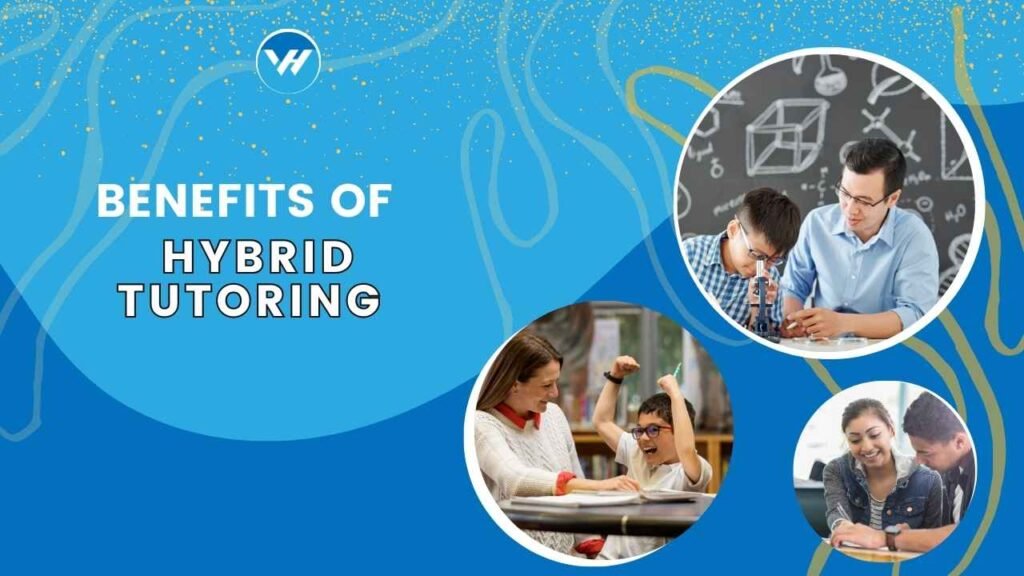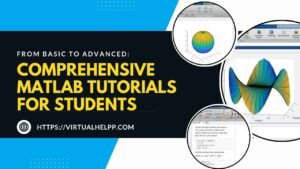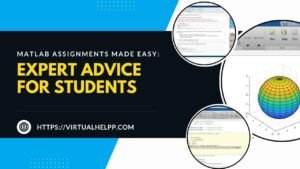In today’s fast-paced world, education is continuously evolving to meet the needs of diverse learners. One of the most significant advancements in this field is hybrid tutoring. This innovative approach combines the best of traditional face-to-face instruction with the flexibility and accessibility of online learning. Let’s dive into what hybrid tutoring is and explore its numerous benefits.

Table of Contents
ToggleDefining Hybrid Tutoring
What is Hybrid Tutoring?
Hybrid tutoring, also known as blended tutoring, integrates in-person and online teaching methods. It allows students to benefit from the personal interaction of traditional tutoring while leveraging the convenience of digital resources. This blend provides a more dynamic and effective learning experience.
Evolution of Hybrid Tutoring
The concept of hybrid tutoring has evolved significantly over the past decade. Initially, it was a simple combination of in-person and online sessions. However, with advancements in technology and educational research, it has become a sophisticated method that enhances student engagement and learning outcomes.
Importance of Hybrid Tutoring in Modern Education
Hybrid tutoring is crucial in modern education as it addresses the limitations of both traditional and online-only tutoring. It offers a balanced approach that caters to various learning styles and needs, making education more inclusive and effective.
Advantages of Hybrid Tutoring
Flexibility and Convenience
One of the primary benefits of hybrid tutoring is its flexibility. Students can access learning materials and sessions at their convenience, balancing their studies with other commitments.
Personalized Learning Paths
Hybrid tutoring allows for personalized learning paths. Tutors can tailor lessons based on the student’s progress and needs, providing a customized educational experience.
Adaptable Schedules
With hybrid tutoring, scheduling becomes more adaptable. Students and tutors can arrange sessions that fit their timetables, making education more accessible.
Enhanced Learning Experience
Hybrid tutoring leverages a variety of tools and methods to enhance the learning experience. This approach combines traditional teaching techniques with innovative digital tools, creating a more engaging and effective learning environment.
Interactive Learning Tools
Interactive tools such as quizzes, videos, and virtual simulations make learning more engaging. These tools help students grasp complex concepts more easily.
Blended Learning Methods
By blending in-person and online learning, hybrid tutoring caters to different learning styles. This approach ensures that students receive a well-rounded education.
Accessibility and Inclusivity
Hybrid tutoring breaks down geographical barriers, making education accessible to students regardless of their location.
Reaching Remote Areas
Students in remote or underserved areas can access quality education through online components of hybrid tutoring. This inclusivity ensures that all students have equal learning opportunities.
Catering to Diverse Learning Needs
Hybrid tutoring is inclusive of diverse learning needs. Whether a student requires more visual aids or prefers auditory learning, hybrid tutoring can accommodate these preferences.
Impact on Students
Improved Academic Performance
Hybrid tutoring has a significant positive impact on students’ academic performance. The personalized attention and customized learning paths contribute to better understanding and retention of material.
Tailored Instruction
Tutors can provide tailored instruction that addresses the specific needs and weaknesses of each student. This personalized approach leads to more effective learning.
Ongoing Assessment and Feedback
Continuous assessment and feedback are integral parts of hybrid tutoring. Regular quizzes and progress reports help students stay on track and improve over time.
Increased Engagement and Motivation
Hybrid tutoring methods are designed to keep students engaged and motivated. The interactive nature of online tools combined with personal interaction creates a stimulating learning environment.
Gamified Learning
Incorporating elements of gamification, such as points, badges, and leaderboards, can make learning fun and motivating for students.
Collaborative Projects
Hybrid tutoring often involves collaborative projects that foster teamwork and communication skills. These projects help students learn from each other and develop critical thinking skills.
Benefits for Educators
Efficient Use of Resources
Hybrid tutoring is also beneficial for educators. It allows them to use their resources more efficiently, reaching more students without compromising on the quality of education.
Resource Sharing
Educators can share resources such as lesson plans, videos, and interactive tools across different platforms. This sharing enhances the overall quality of education.
Time Management
Hybrid tutoring offers better time management for educators. They can schedule sessions flexibly and use online tools to streamline administrative tasks.
Professional Development
Hybrid tutoring provides continuous learning opportunities for educators. It encourages them to stay updated with the latest teaching methods and technologies.
Continuous Learning Opportunities
Educators can participate in webinars, online courses, and other professional development activities. These opportunities help them improve their teaching skills and stay current with educational trends.
Networking with Peers
Hybrid tutoring platforms often include forums and communities where educators can network with their peers. This networking fosters collaboration and the exchange of ideas.
Role of Technology in Hybrid Tutoring
Digital Tools and Platforms
Technology plays a crucial role in hybrid tutoring. Various digital tools and platforms facilitate the learning process and make it more interactive.
Learning Management Systems (LMS)
Learning Management Systems (LMS) are central to hybrid tutoring. They provide a platform for managing courses, tracking progress, and facilitating communication between students and tutors.
Virtual Classrooms
Virtual classrooms replicate the experience of in-person classes. They allow for real-time interaction, screen sharing, and collaborative activities, making online learning more engaging.
Data-Driven Insights
Technology enables data-driven insights that can significantly enhance the learning process. Tutors can track student progress and tailor their teaching methods accordingly.
Tracking Student Progress
Advanced analytics tools help tutors track student progress in real-time. This tracking allows for immediate intervention if a student is struggling with a particular topic.
Personalized Feedback
Personalized feedback is crucial for student development. Technology allows tutors to provide detailed and specific feedback, helping students understand their strengths and areas for improvement.
Virtual Help: The Ultimate Hybrid Tutoring Solution
What is Virtual Help?
Virtual Help is a comprehensive platform that facilitates hybrid tutoring. It offers an array of features designed to enhance the learning experience for students and streamline the teaching process for educators.
Overview of the Platform
Virtual Help connects students with qualified tutors through its iOS and Android app. The platform offers a seamless blend of in-person and online tutoring services.
Key Features and Benefits
Key features of Virtual Help include personalized tutoring, interactive learning tools, and flexible scheduling. These features ensure a high-quality educational experience for students.
How Virtual Help Facilitates Hybrid Tutoring
Virtual Help excels at facilitating hybrid tutoring by connecting students and tutors effectively and providing comprehensive support.
Connecting Students and Tutors
The platform’s advanced matching system ensures that students are paired with tutors who best meet their educational needs. This connection is crucial for effective hybrid tutoring.
Comprehensive Support System
Virtual Help offers a comprehensive support system that includes technical assistance, educational resources, and continuous feedback. This support ensures a smooth and productive learning experience.
Conclusion
In conclusion, hybrid tutoring offers numerous benefits that enhance both the teaching and learning experience. Its flexibility, accessibility, and personalized approach make it a valuable educational method. As technology continues to advance, the future of hybrid tutoring looks promising, providing even more opportunities for students and educators alike.
FAQs
What is hybrid tutoring?
Hybrid tutoring combines in-person and online teaching methods to provide a flexible and effective learning experience.
How does hybrid tutoring improve learning outcomes?
Hybrid tutoring improves learning outcomes by offering personalized instruction, continuous assessment, and a blend of interactive learning tools.
Can hybrid tutoring be customized for individual students?
Yes, hybrid tutoring can be customized to meet the individual needs of each student, providing tailored learning paths and personalized feedback.
What role does technology play in hybrid tutoring?
Technology plays a crucial role in hybrid tutoring by providing digital tools and platforms, enabling data-driven insights, and facilitating virtual classrooms.
How can Virtual Help assist with hybrid tutoring?
Virtual Help connects students with qualified tutors, offers personalized tutoring services, and provides comprehensive support, making hybrid tutoring more accessible and effective.





